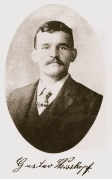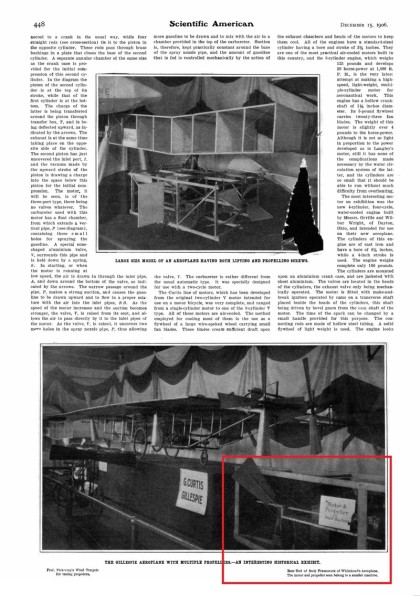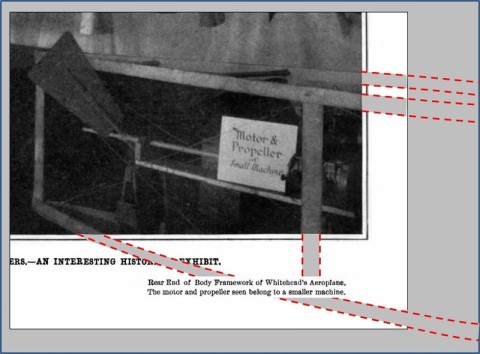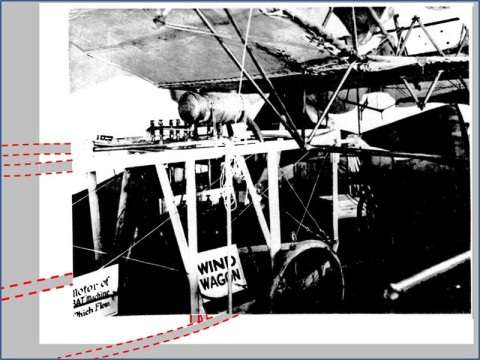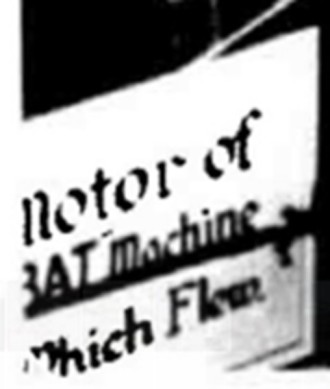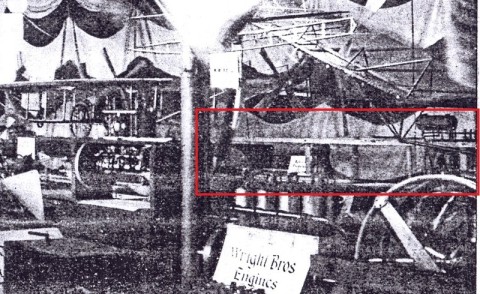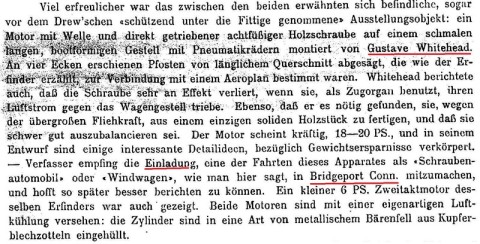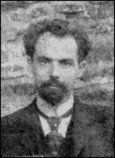Whitehead's "No. 21" on display, Dec. 1906, in New York
The fuselage frame of Whitehead's 1901 aircraft along with the original motor (and at least three other motors he constructed) were on display at the December 1906 exhibition of the Aero Club of America. A sign clearly referred to the aircraft having flown. And the Scientific American article covering the event also mentioned that Whitehead had flown in 1901.
Scientific American, Dec. 15, 1906, p.448
Photo by Ernst LaRue Jones
Display label of Whitehead's original motor
In the bottm left corner of the photo above, a sign indicates that Whitehead's original 1901 motor was displayed in the central portion of the fuselage (unfortunately not visible in either of the above photos showing the bow and stern respectively).
Illustrierte Aeronautische Mitteilungen, Jan. 1907, p.298
On page 296 of its Jan. 1, 1907 issue, the German publication, "Illustrierte Aeronautische Mitteilungen", published a panorama photo of the exhibition hall at the Dec. 1906 Aero Club of America Show. The photo was intended to highlight the Wright brothers' motor in the foreground. However, directly above and behind it in the background, the entire fuselage of Whitehead's aircraft (including motor and fuel tank - highlighted in red) can be seen (below):
Translation:
Much more encouraging was the display-item located between the two, aforementioned items which was even placed in front of and “under the protective wing” of the Drew-like item: it was a motor with a drive-shaft and a directly-driven, eight-foot long, wooden propeller attached to a long, narrow, boat-like frame on inflated tires built by Gustave Whitehead. At four points there were sawn-off beams of elongated cross-section which, according to the inventor, were for attaching the wings. Whitehead also reported that the air-screw’s effectiveness was greatly diminished if its down-flow blew onto the wagon’s framework when used for pulling [tractor]. Furthermore, that, because of the inordinately high centrifugal force, he had found it necessary to make the propeller out of one, single block of wood and that it had been difficult to balance the propeller well. The motor appears to be powerful, 18-20hp, and its design contains several interesting aspects of detail in regard to weight-reduction. This author was invited to participate in one of this apparatus’ test-drives in Bridgeport, Connecticut, as an “airscrew-automobile” or “windwagon” as it’s called here, and hopes, later, to be able to report more fully. A small, 6hp, two-stroke engine by the same inventor was also shown. Both motors are equipped with a distinct type of air-cooling: their cylinders are sheathed in a type of metal bearskin made of copper-sheet mopping.
Comment:

